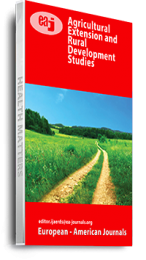In the context of Nepal, the most devastating disaster is flood in terms of the number of human causalities, livestock, livelihoods losses and damages. There are structural, soft structural, and nonstructural methods to reduce flood risks. In addition to these methods, there are also community actions being used for several years in the rural communities to mitigate, respond, and recover from the impacts of floods. The main objective of the research is to present an analysis of such community actions in the Disaster Risk Reduction (DRR) cycle, livelihood capitals, and Early Warning System (EWS) and then to summarize the conclusion. Accordingly, research was carried out in two communities, Kudiya and Paklihawa of Narayani river basin at Susta Rural Municipality, Nawalparashi-west, Nepal. The paper illustrates overall rural strategies adopted by community people to cope, withstand, and recover from the impacts of flood. The paper also includes an effective and efficient holistic approach to explain community-level empirical evidence. The paper illustrates the overall findings about community actions contributing to flooding resilience and these empirical evidences are found relevant, realistic, practical, and durable solutions in reducing the flood risks in the rural context of Nepal.
Keywords: Community, Flood, Livelihoods, Resilience, actions, capitals

